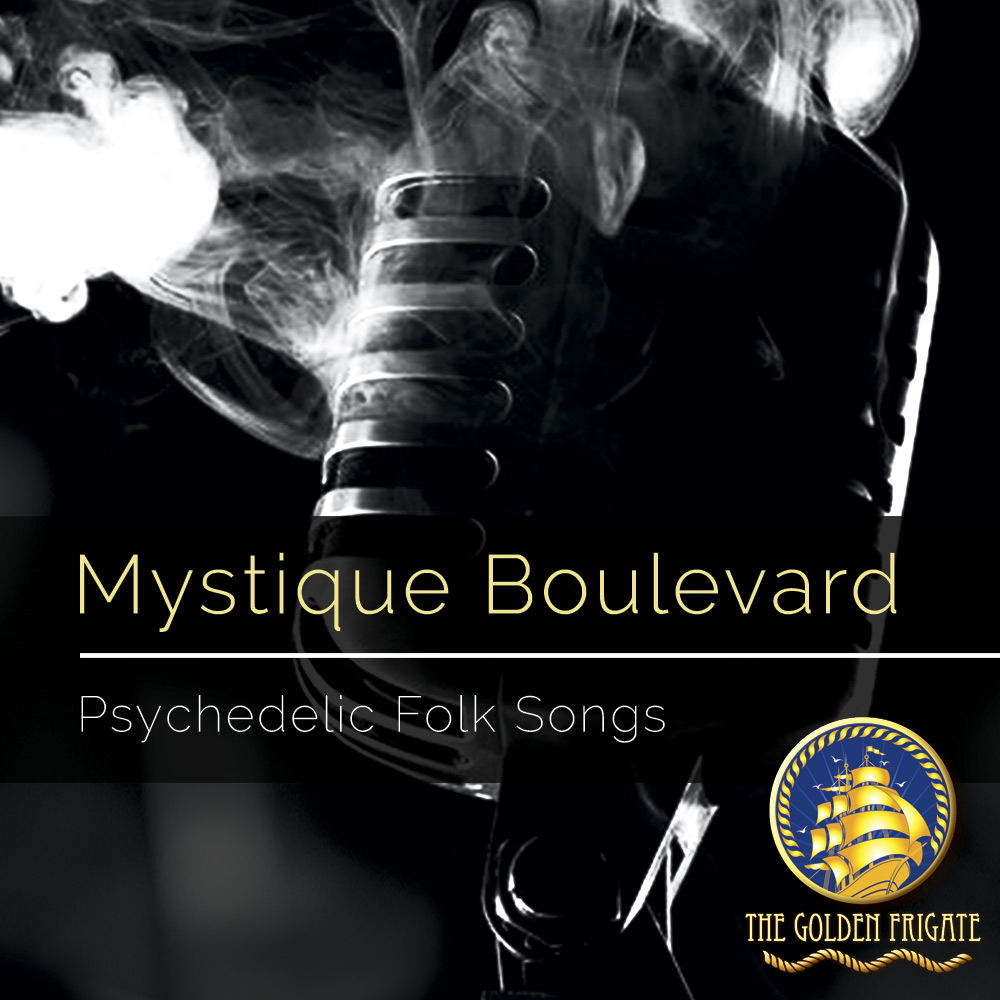Mystique Boulevard
Psychedelic Folk Songs
Black is the Colour
‘Black is the Colour (of My True Love’s hair)’ is a folk song of Scottish origin collected in the Appalachian Mountains by Cecil J. Sharp and Maud Karpeles during the years 1916 to 1918.
The song exists in different versions and is set to different melodies. Some of them are traditional and one of the versions was written by John J. Niles, an Americam composer.
It is a magically beautiful and melodic love song and on our site we have two totally different interpretations of it – a psychedelic version on this album and a modern guitar version on ‘The Grenadier and the Lady’ collection of songs.
The True Lover’s Farewell
It is a beautiful 18th-century English folk ballad. The tune is said to have been popular in both England and America. Cecil Sharp collected nine variants of this song in the Appalachian Mountains. ‘The True Lover’s Farewell’ was first published in Roxburghe Ballads in 1710.
Other versions and variants of this very beautiful song include ‘The Turtle Dove’ and ‘Ten Thousand Miles’. ‘The True Lover’s Farewell’ is believed to be the song from which Robert Burns took many of the lines for his ‘A Red, Red Rose’.
Scarborough Fair
‘Scarborough Fair’ is one of the ancient Riddle Songs which is believed to have originated from an earlier Scottish ballad ‘The Elfin Knight’, also known as ‘The Lovers’ Tasks’. This ancient ballad dates as far back as 1670 or even earlier. In a classical riddle song two people impose impossible tasks on each other and the one who fails to set another task of equal difficulty submits to the will of the other according to the rules of the game.
Countless variations of ‘Scarborough Fair’ exist, sometimes the song is sung as a duet. In the psychedelic version given on our site the replies are omitted.
It is interesting to note that the line ‘Parsley, sage, rosemary and thyme’ has a special meaning. According to some sources the herbs mentioned in the song represented different virtues in Medieval times. Parsley ment comfort, sage was strength, rosemary was love, and thyme represented courage.
Greensleeves
‘Greensleeves’ is a 16th-century English folk song that as no other melody still holds and haunts.
The earliest written reference to this song was in 1580 when ‘A Newe Northen Dittye of ye Ladye Greene Sleves’ broadside ballad was registered at the London Stationer’s Company by Richard Jones and the tune was found in some late 16th and early 17th-century sources.
It is believed that the song ‘Greensleeves’ was written by Henry VIII for Anne Boleyn during their courtship, which makes the story more intriguing. However this is highly doubtful and might not be true as the song is written in the Italian style which appeared in England only after his death.
‘Greensleeves’ is probably the most well-known and recognizable English tune of all times and — whatever the theories about its origin are — it expresses the feeling of unrequited love of a broken-hearted wealthy man for his beloved. And who she was will remain a mystery.
This is our psychedelic fantasy version of ‘Greensleeves’.
The Cuckoo
‘The Cuckoo’ is a beautiful and very melodic traditional English folk song. We found it in Cecil J. Sharp and Maud Karpeles’s collection of folk songs (1968) and recorded our own psychedelic improvisational version of it.
The Lady and the Dragoon
Another beautiful song from Cecil J. Sharp and Maud Karpeles’s collection of folk songs (1968). According to the authors the song was sung by Mr Clinton Fitzgerald at Royal Orchard, Afton, Va. The text was taken from the singing of Mrs Sands at Allanstand, N.C.
The ballad tells a story of a valiant soldier who marries a rich lady against the will of her father. He fights for his love with seven armed men and eventually wins the battle, proving himself a hero. Her father finally condescends saying that ‘…You should have my daughter and a thousand pound of gold…’ and the soldier stays with the lady.

